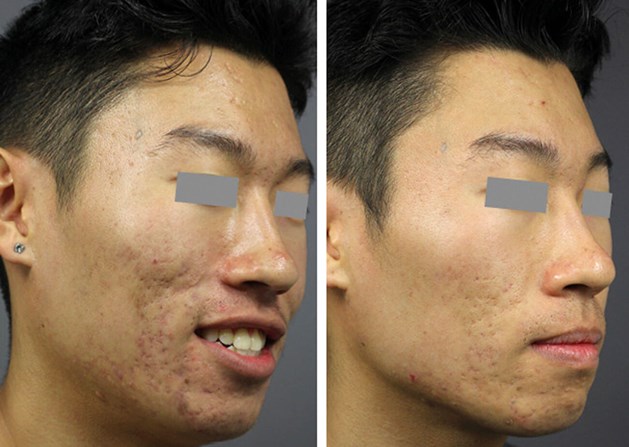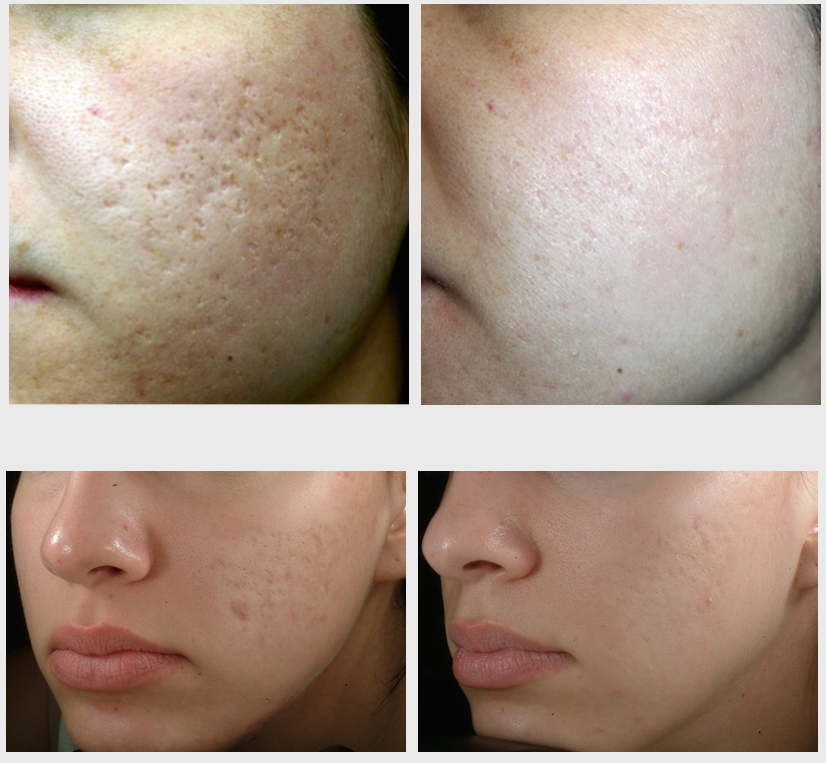Exploring Skin Problem: Identifying and Dealing With Acne Scars for Healthier Skin
Acne marks represent a considerable concern for individuals seeking to preserve healthy and balanced skin, as they can impact both appearance and self-esteem. Recognizing the numerous kinds of scars, from atrophic to hypertrophic, is vital for establishing ideal therapy options.
Comprehending Acne Scars

The body's all-natural healing process can result in either atrophic scars, which look like clinical depressions in the skin, or hypertrophic scars, which are increased and result from overflow of collagen. In addition, the mental toll of acne scars must not be underestimated; numerous individuals report feelings of embarrassment, anxiousness, and decreased self-esteem. This psychological burden can affect social communications and overall high quality of life.
Dealing with acne scars needs a detailed understanding of their formation and impact. Understanding of the capacity for lasting repercussions related to without treatment scars can encourage people to seek ideal treatments. Early intervention and efficient administration methods can significantly improve skin appearance and improve emotional resilience, stressing the value of comprehending the complexities bordering acne scars.
Kinds of Acne Scars
Acne scars can be categorized into unique kinds, each showing unique qualities and needing details therapy strategies. acne scars treatment. The main sorts of acne marks consist of atrophic, hypertrophic, and keloid scars

Hypertrophic scars, on the other hand, are elevated over the skin level and are the outcome of extreme collagen manufacturing throughout the recovery process. They generally remain within the borders of the initial acne sore. Keloid scars are similar however expand beyond the original injury website, developing bigger, elevated areas that can be painful or scratchy.
Recognizing these sorts of scars is crucial for picking appropriate treatment choices. Different scars may respond much better to particular therapies, such as laser therapies, fillers, or surgical treatments, stressing the value of a customized technique to acne scar administration.
Recognizing Your Marks
When examining the look of your skin, it is vital to properly identify the kind of marks present, as this will educate the most efficient therapy method. Acne marks generally come under two groups: hypertrophic and atrophic marks. Atrophic scars, which are one of the most typical, look like depressions or impressions on the skin. These can even more be categorized into ice-pick marks, boxcar marks, and rolling scars, each exhibiting unique features and calling for different techniques for assessment.
Hypertrophic scars, on the various other hand, are increased and occur due to excessive collagen manufacturing throughout the recovery process. Identifying the specific attributes of your marks-- such as size, depth, and structure-- is vital for appropriate recognition (acne scars). Additionally, Related Site take into consideration the distribution of marks throughout your skin, as this can indicate the extent and duration of the acne condition
Involving with a skin specialist can offer useful understandings into the nature of your scars, aiding in the differentiation between different kinds. A detailed understanding of your marks will ultimately result in a much more tailored and effective therapy plan, making sure a clearer and much healthier skin tone.
Treatment Choices Available
Identifying the details sort of acne marks present on your skin lays the groundwork for exploring effective therapy alternatives. Typical kinds of acne scars consist of atrophic (depressed), hypertrophic (increased), and post-inflammatory erythema.
For atrophic marks, choices such as chemical peels, microneedling, and laser resurfacing are commonly made use of. Chemical peels off make use of acids to remove the outer layer of skin, promoting new cell development.
Hypertrophic marks can be treated with corticosteroid shots to squash the mark or laser treatment to lower redness and improve look. Silicone gel sheets and stress dressings might additionally assist in handling increased scars.
Furthermore, facial fillers can temporarily fill up in depressions from atrophic scars, while medical excision might be appropriate for serious instances. Each therapy choice has its advantages and considerations, making it important to speak with a dermatologist. They can offer personalized suggestions based upon the type and seriousness of your scars, as well as your skin type and overall wellness.
Tips for Prevention
Reliable prevention methods can significantly decrease the chance of creating acne scars. The initial step is to preserve a constant skin care regimen that consists of gentle cleaning, exfoliation, and moisturizing. Utilizing non-comedogenic items helps avoid clogged up pores, which can aggravate acne. In addition, integrating topical treatments including salicylic acid or benzoyl peroxide can effectively manage outbreaks and reduce inflammation.
Preventing the desire to Homepage select or stand out acne sores is critical, as this can bring about deeper skin damages and enhance the risk of scarring. Instead, think about you could try this out making use of a cool compress or over-the-counter treatments to lower swelling and redness.
Sun security is an additional vital facet of avoidance; ultraviolet (UV) rays can darken scars and prevent the recovery procedure. Applying a broad-spectrum sunscreen with at the very least SPF 30 daily can safeguard the skin and promote even healing.
Finally, keeping a balanced diet rich in minerals, anti-oxidants, and vitamins sustains skin health and wellness and recovery. Remaining moisturized and taking care of stress and anxiety degrees can likewise play a significant role in reducing acne flare-ups. By implementing these methods, individuals can dramatically reduce their opportunities of creating acne scars.
Conclusion
In verdict, understanding and recognizing acne scars is crucial for efficient treatment and accomplishing much healthier skin. Different types of acne marks, including hypertrophic and atrophic scars, require certain interventions tailored to individual needs.
The body's all-natural healing process can result in either atrophic marks, which appear as anxieties in the skin, or hypertrophic scars, which are increased and result from overflow of collagen. They are further split into three subtypes: ice pick scars, boxcar scars, and rolling scars. Acne marks typically fall right into two categories: hypertrophic and atrophic marks. These can better be categorized into ice-pick marks, boxcar marks, and rolling scars, each displaying unique features and needing various strategies for assessment.
Various kinds of acne marks, consisting of atrophic and hypertrophic marks, demand particular interventions customized to private requirements.